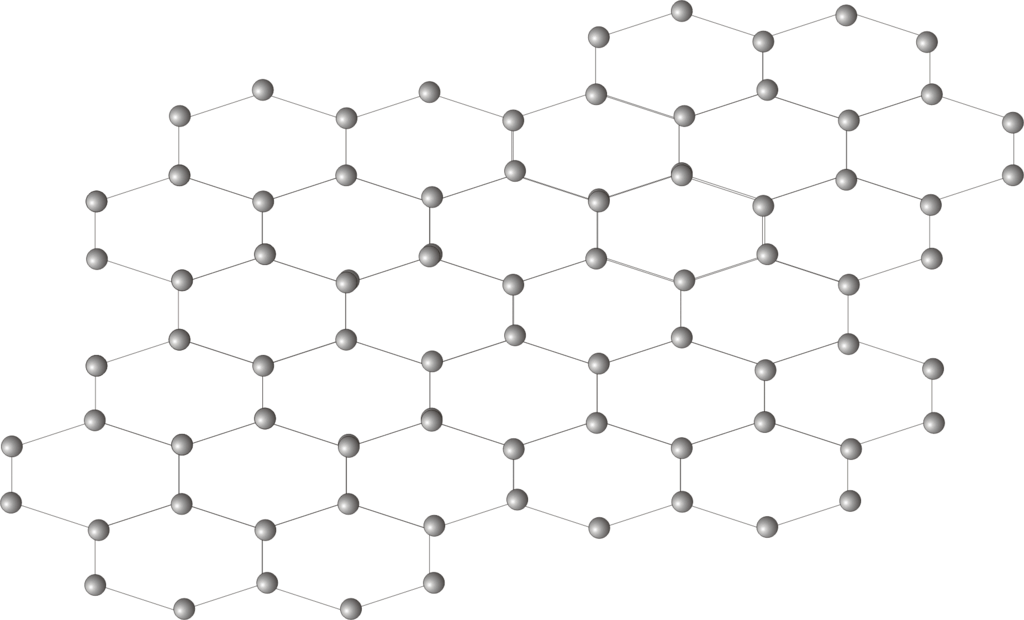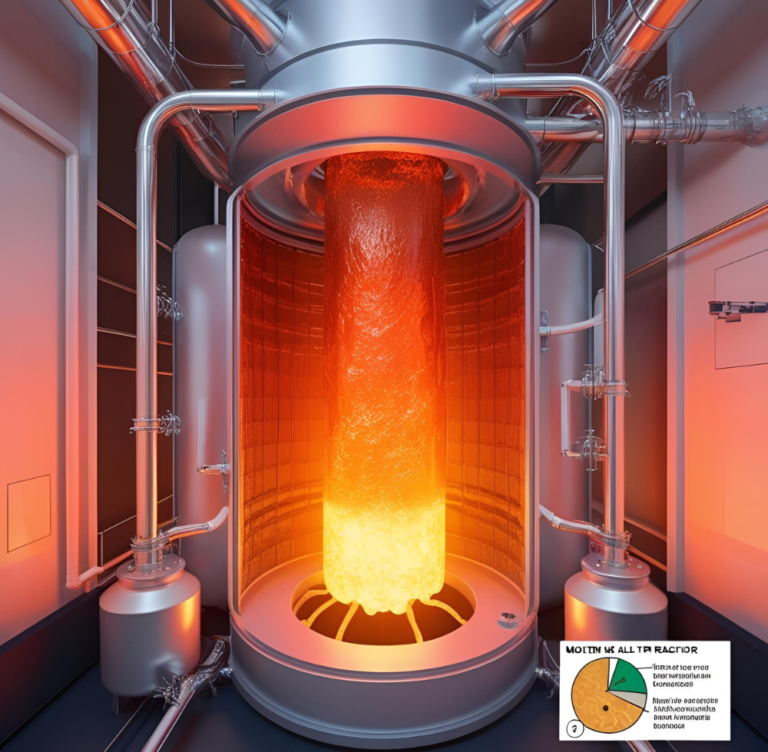Introduction: A Revolution Hidden in Pencil Lead?
Imagine this – the revolutionary material that scientists are hailing as a potential game-changer in electronics, energy storage, and beyond, might be hiding right in your pencil case. That’s right, graphene, a wonder material with properties that surpass steel in strength and outperform silicon in conductivity, can actually be derived from the humble pencil lead – graphite.
But, what is graphene? graphene isn’t just a fancy form of graphite. It’s a single layer of carbon atoms arranged in a unique hexagonal lattice structure, unlocking a whole new realm of possibilities. Buckle up, because we’re about to delve into the fascinating world of graphene, exploring its remarkable properties, its potential applications, and the exciting future it holds.
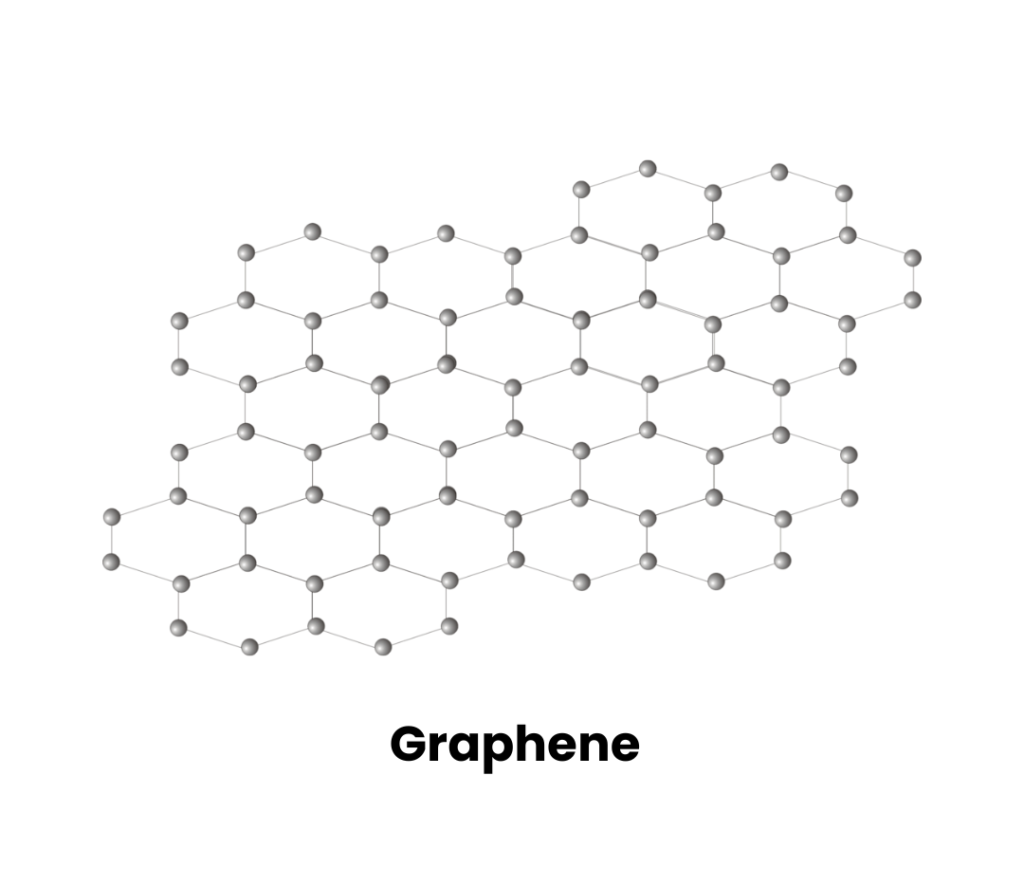
What Is Graphene?
While it may share a common source with the everyday pencil lead (graphite), graphene is a distinct and extraordinary material. Unlike graphite, a three-dimensional (3D) structure of loosely bound carbon layers, graphene exists in a two-dimensional (2D) plane. Imagine a single sheet of carbon atoms, tightly packed in a honeycomb lattice. This unique graphene structure is responsible for it’s remarkable properties.
Graphene Formula
Graphene doesn’t have a chemical formula in the traditional sense like H2O (water) or NaCl (table salt). This is because graphene isn’t a molecule, it’s a specific arrangement of atoms.
Here’s how to describe graphene’s structure:
- Atomic Composition: Graphene is composed entirely of carbon atoms.
- Arrangement: These carbon atoms are arranged in a hexagonal lattice structure, often described as a honeycomb pattern.
- Single Layer: This arrangement forms a single atomic layer, making graphene incredibly thin (about 0.34 nanometers).
While there’s no chemical formula, you might see graphene referred to as “C” or “sp2 Carbon” to indicate its composition. However, these notations don’t capture the specific two-dimensional arrangement of the carbon atoms that defines graphene’s unique properties.
Graphene Properties
Graphene boasts a remarkable combination of properties that make it a highly sought-after material for various potential applications. Here’s a breakdown of some of graphene’s key properties:
Strength Beyond Compare: The King of the Material Realm
- Forget steel. Graphene holds the title of the strongest material ever measured. Studies suggest a tensile strength exceeding 130 Gigapascals (GPa). To put that into perspective, it translates to being roughly 100 to 300 times stronger than steel! This exceptional strength arises from the unique arrangement of carbon atoms in graphene’s hexagonal lattice. The strong covalent bonds within each layer, combined with the van der Waals forces between layers (although weak individually), create an incredibly robust structure that can withstand immense pressure. Imagine a material so strong that it could be used to build lightweight yet ultra-durable structures, revolutionizing everything from aerospace engineering to bulletproof materials.
Electrical Conductivity Champion: Powering the Future of Electronics
- Graphene excels in electrical conductivity, surpassing even the most established conductors like copper. Electrons in graphene move with minimal resistance due to their delocalized nature within the hexagonal lattice. This translates to a conductivity estimated to be around 1,000,000 S/m (Siemens per meter), exceeding copper’s 59.6 x 10^6 S/m by a significant margin. With such efficient electron flow, graphene paves the way for next-generation electronics. We can envision faster transistors, more efficient circuits, and even flexible electronics that can bend and fold without compromising performance.
Question: With graphene’s superior conductivity, can you envision a future with faster computers, more efficient solar panels, or even flexible and transparent electronics seamlessly integrated into our clothing? What exciting possibilities does this hold for the future of technology?
Transparency with a Twist: Seeing Through Strength
- Here’s a surprising fact about graphene: despite its exceptional strength, it’s nearly transparent to light. Graphene absorbs only around 2.3% of visible light, making it almost invisible to the naked eye. This unique combination of properties – strength and transparency – opens doors for innovative applications. Imagine lightweight, transparent displays for electronic devices or even ultra-strong, yet clear windows for buildings, offering both structural integrity and unobstructed views.
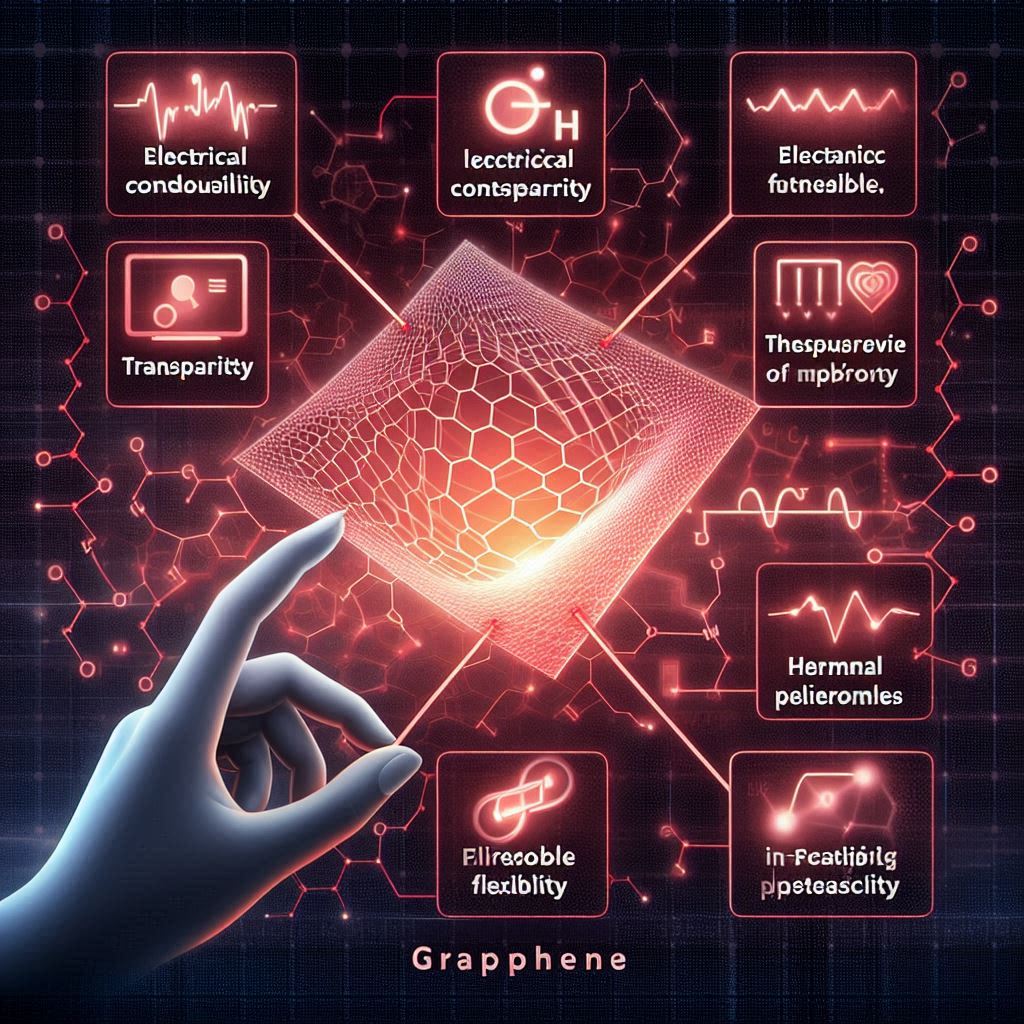
Flexibility that Defies Expectations: Bending the Rules of Material Science
- Don’t be fooled by its atomic thinness. Graphene isn’t just incredibly strong and conductive; it’s also surprisingly flexible. This single-atom-thick sheet can be easily bent and manipulated. Imagine a material that’s strong enough to withstand immense pressure yet flexible enough to conform to different shapes. This unique property makes graphene ideal for applications in flexible electronics, wearable devices, and even bioengineering, where it can potentially interact with soft biological tissues.
Thermal Management Maestro: Keeping Your Tech Cool
- Graphene isn’t just strong, conductive, and transparent; it’s also an exceptional heat conductor. Its thermal conductivity is estimated to be (4.84 ± 0.44) × 10^3 to (5.30 ± 0.48) × 10^3 W·m⁻¹·K⁻¹, surpassing most traditional materials. This property makes graphene a game-changer for thermal management applications. Imagine electronic devices that efficiently dissipate heat, preventing overheating and extending their lifespan. Graphene could revolutionize everything from computer chips to electric vehicles, ensuring efficient operation and optimal performance.
Key Graphene Properties:
- Weight: 0.77 milligrams per square meter
- Tensile Strength: Over 130 Gigapascals (GPa)
- Young’s Modulus: 1.0 Terapascal (TPa)
- Electrical Conductivity: Around 1,000,000 S/m (Siemens per meter)
- Thermal Conductivity: (4.84 ± 0.44) × 10^3 to (5.30 ± 0.48) × 10^3 W·m⁻¹·K⁻¹.
The Power of Structure:
The key to graphene’s remarkable properties lies in its unique two-dimensional structure. The hexagonal lattice arrangement of carbon atoms allows for efficient electron movement and strong interatomic bonds, leading to exceptional strength and electrical conductivity.
By understanding these properties, scientists and engineers can explore the vast potential of graphene in various fields, from electronics and energy storage to composite materials and bioengineering.
Geaphine Oixide
Graphene oxide (GO) is a close relative of graphene, but with a key difference: it’s not just pure carbon atoms. Here’s a breakdown of graphene oxide and how it compares to graphene:
What is Graphene Oxide?
- Chemically Modified Graphene: Graphene oxide is essentially graphene that has been chemically treated to introduce oxygen-containing functional groups (like hydroxyl and epoxy groups) onto its surface.

Properties of Graphene Oxide:
- More Reactive: The presence of oxygen groups makes graphene oxide more reactive and water-soluble compared to pure graphene. This makes processing and manipulation easier.
- Electrical Insulator: Unlike graphene, which is a good conductor, graphene oxide is an electrical insulator due to the disruption of its electron flow by the oxygen groups.
- Potential Applications: Despite not being conductive, graphene oxide has its own set of valuable properties. Here are some potential applications:
- Composites: Graphene oxide can be incorporated into composite materials to improve their strength, barrier properties, and flame retardancy.
- Energy Storage: Research is exploring the use of graphene oxide in supercapacitors due to its high surface area and ability to store energy.
- Water Treatment: Graphene oxide membranes show promise in water filtration and desalination processes.
Relationship Between Graphene and Graphene Oxide:
- Transformation Potential: Graphene oxide can be a stepping stone to producing graphene. By applying chemical reduction techniques, some of the oxygen groups can be removed, restoring some of graphene’s conductivity and other properties. This process is known as reduced graphene oxide (rGO).
Graphene Vs Graphite
Graphene and graphite might seem like close relatives, but there’s a key difference: their structure. Here’s a breakdown of how graphene and graphite compare:
Graphene:
- Structure: A single layer of carbon atoms arranged in a hexagonal lattice (honeycomb pattern).
- Thickness: Incredibly thin, about 0.34 nanometers (one nanometer is a billionth of a meter).
- Properties: Strong, flexible, excellent conductor of electricity and heat, nearly transparent.
- Challenges: Scalable and cost-effective production methods are still under development.
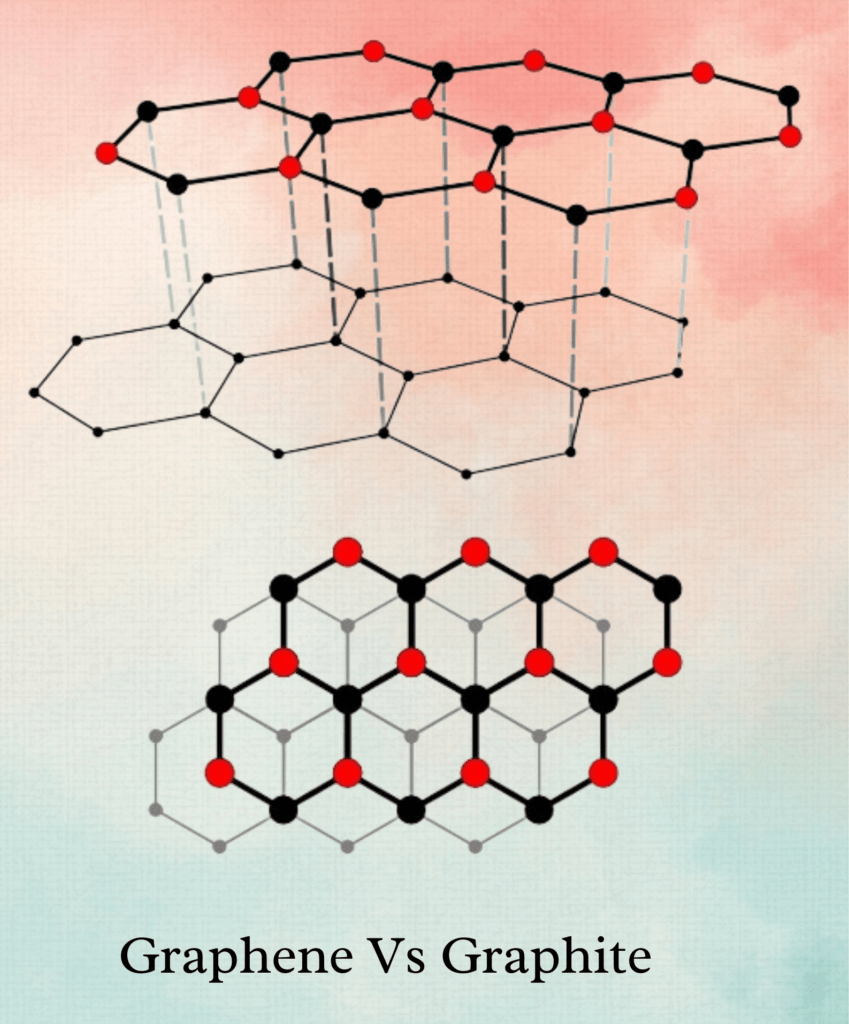
Graphite:
- Structure: Composed of many stacked layers of graphene sheets. Van der Waals forces hold weekly these layers together.
- Thickness: Varies depending on the number of stacked layers.
- Properties: Relatively soft and brittle, good conductor of electricity and heat, opaque.
- Availability: Graphite is a naturally occurring mineral and is readily available.
Key Differences:
Here’s a table summarizing the key differences between graphene and graphite:
| Feature | Graphene | Graphite |
|---|---|---|
| Structure | Single layer of carbon atoms (hexagonal lattice) | Multiple stacked layers of graphene |
| Thickness | One atom thick (0.34 nm) | Varies depending on number of layers |
| Strength | Extremely strong | Relatively soft and brittle |
| Flexibility | Flexible and elastic | Brittle |
| Electrical Conductivity | Excellent conductor | Good conductor |
| Transparency | Nearly transparent | Opaque |
| Availability | Production methods under development | Naturally occurring mineral |
Unveiling the Story: From Humble Beginnings to Scientific Breakthrough
Long before the discovery of graphene, scientists were fascinated by graphite, a naturally occurring mineral used in everything from pencils to lubricants. Its layered structure intrigued researchers, but isolating individual layers proved challenging. Graphite’s weakness is its strong in-plane bonding within each layer, while van der Waals forces weakly hold together the layers themselves. Separating these layers remained a scientific hurdle for decades.
The “Sticky Tape” Solution: A Serendipitous Discovery
Enter Andre Geim and Konstantin Novoselov, two physicists at the University of Manchester, in 2004. Their quest wasn’t specifically for graphene; they were exploring new methods to study the electrical properties of various materials. In a moment of scientific serendipity, they stumbled upon a remarkably simple solution to isolate graphene – Scotch tape.
The process involved repeatedly peeling off adhesive tape from a bulk piece of graphite, leaving behind microscopic flakes on the tape’s surface. By carefully transferring these flakes to an appropriate substrate, they were able to analyze them and, to their surprise, confirmed they had isolated single layers of graphene. This seemingly mundane method, now known as the “Scotch tape method,” became a turning point in materials science.
Question: This story highlights the power of curiosity and unexpected discoveries. Do you think there are other “hidden wonders” waiting to be discovered in everyday materials? Please share your thoughts on the importance of scientific exploration and its potential for groundbreaking advancements!
Beyond the Initial Spark: A Scientific Ignition
The discovery of graphene sent shockwaves through the scientific community. News of a single-atom-thick material with incredible properties spread quickly. Physicists, chemists, engineers – researchers from all disciplines saw the potential of graphene and began delving deeper. Research exploded, exploring the fundamental properties of graphene, its potential applications in various fields, and even developing new methods for large-scale production. Geim and Novoselov’s groundbreaking work was recognized by the Nobel Prize in Physics in 2010, solidifying the significance of their discovery and the vast potential of graphene.
This simple yet ingenious method of isolating graphene opened the door to a world of possibilities. It’s a testament to the power of scientific curiosity and the unexpected discoveries that can arise from unconventional approaches. The story of graphene serves as an inspiration to keep exploring, pushing boundaries, and embracing the potential of the seemingly ordinary.
Further Exploration on Graphene:
- National Institute of Standards and Technology (NIST): The NIST website offers a wealth of information on various materials, including a detailed page on graphene with its properties, applications, and research efforts.
- Nature Materials: Nature Materials is a leading scientific journal focusing on advanced materials research. You can find numerous research papers and articles related to graphene, exploring its fundamental properties and potential applications.
- American Chemical Society (ACS) Nano: ACS Nano is another prestigious scientific journal publishing cutting-edge research in nanoscience and nanotechnology. It features a significant collection of articles on graphene, exploring its synthesis, characterization, and potential uses.
- Science Magazine: Science Magazine is a renowned scientific journal with historical significance. You can find the original research paper by Geim and Novoselov on the isolation of graphene, published in Science in 2004.
- European Union Graphene Flagship: This website is an initiative of the European Union specifically focused on graphene research and innovation. It provides a comprehensive overview of graphene, ongoing research projects, and future directions for this material.
References
- K. S. Novoselov et al., “Electric field effect in atomically thin carbon films,” Science 304, 102 (2004). (This is the original research paper by Geim and Novoselov on isolating graphene using the Scotch tape method)
- **”Graphene: A New Dimension in Materials Science,” National Institute of Standards and Technology, (accessed March 20, 2024)
Graphene Uses: Exploring Graphene’s Potential Applications
Graphene’s remarkable properties aren’t just scientific marvels; they hold the potential to revolutionize numerous fields. Here’s a glimpse into how graphene could impact various sectors:
Revolutionizing Electronics: A World of Speed and Transparency
- Faster Transistors: Graphene’s exceptional electrical conductivity could lead to the development of significantly faster transistors, the building blocks of electronic devices. This translates into faster processing speeds, improved performance, and potentially even lower power consumption for our computers and smartphones.
- Transparent Touchscreens: Graphene’s nearly transparent nature makes it a strong candidate for next-generation touchscreens. Imagine flexible, transparent displays seamlessly integrated into our devices, blurring the lines between reality and the digital world.
- Flexible Electronics: The flexibility of graphene opens doors for the creation of bendable and foldable electronic devices. With graphene, we could see flexible displays for smartphones and tablets, wearable electronics seamlessly integrated into clothing, and even implantable medical devices.
Super-Composites for a Stronger World: Redefining Strength and Conductivity
- Enhanced Composites: By incorporating graphene into existing composite materials, we can significantly improve their strength, conductivity, and overall performance. Imagine lighter yet stronger aircraft components, more durable construction materials, and even bulletproof vests with unprecedented protection levels.
- Next-Gen Aerospace Engineering: Graphene’s lightweight and high-strength properties make it ideal for aerospace engineering applications. It could lead to the development of lighter and stronger aircraft structures, potentially increasing fuel efficiency and pushing the boundaries of space exploration.
Energy Storage Reinvented: Powering a Sustainable Future
- Graphene-Based Batteries: Graphene’s unique properties are promising for developing next-generation batteries with faster charging times, higher energy density, and improved lifespans. This could revolutionize electric vehicles, portable electronics, and even grid-scale energy storage solutions.
- Supercapacitors with a Boost: Graphene’s ability to store and release energy quickly makes it ideal for supercapacitors. These supercapacitors could be used for applications requiring rapid energy bursts, such as electric vehicle regeneration systems or powering short-duration electronics.
Turning the Tide on Water Scarcity: A Graphene Solution
- Desalination Revolution: Graphene membranes hold immense potential for desalination processes. Their superior filtration abilities could allow for more efficient removal of salt from seawater, providing clean water access to water-scarce regions and mitigating the global water crisis.
- Water Purification Advancements: Graphene membranes could also be used for advanced water purification systems, removing contaminants and pollutants from water sources. This could ensure cleaner drinking water for communities facing water quality issues.
Biomedical Breakthroughs on the Horizon: A Material for Life Sciences
- Bioengineering Marvels: Graphene’s biocompatibility offers exciting possibilities in bioengineering. It could be used to create scaffolds for tissue regeneration, allowing for the growth of new cells and tissues to repair damaged organs.
- Drug Delivery Revolution: Graphene’s ability to interact with biomolecules makes it a potential candidate for targeted drug delivery systems. These systems could deliver drugs directly to diseased cells, minimizing side effects and improving treatment outcomes.
- Biosensors for Personalized Medicine: Graphene’s exceptional sensitivity makes it suitable for developing biosensors. These sensors could be used for early disease detection, personalized medicine approaches, and real-time monitoring of various health parameters.
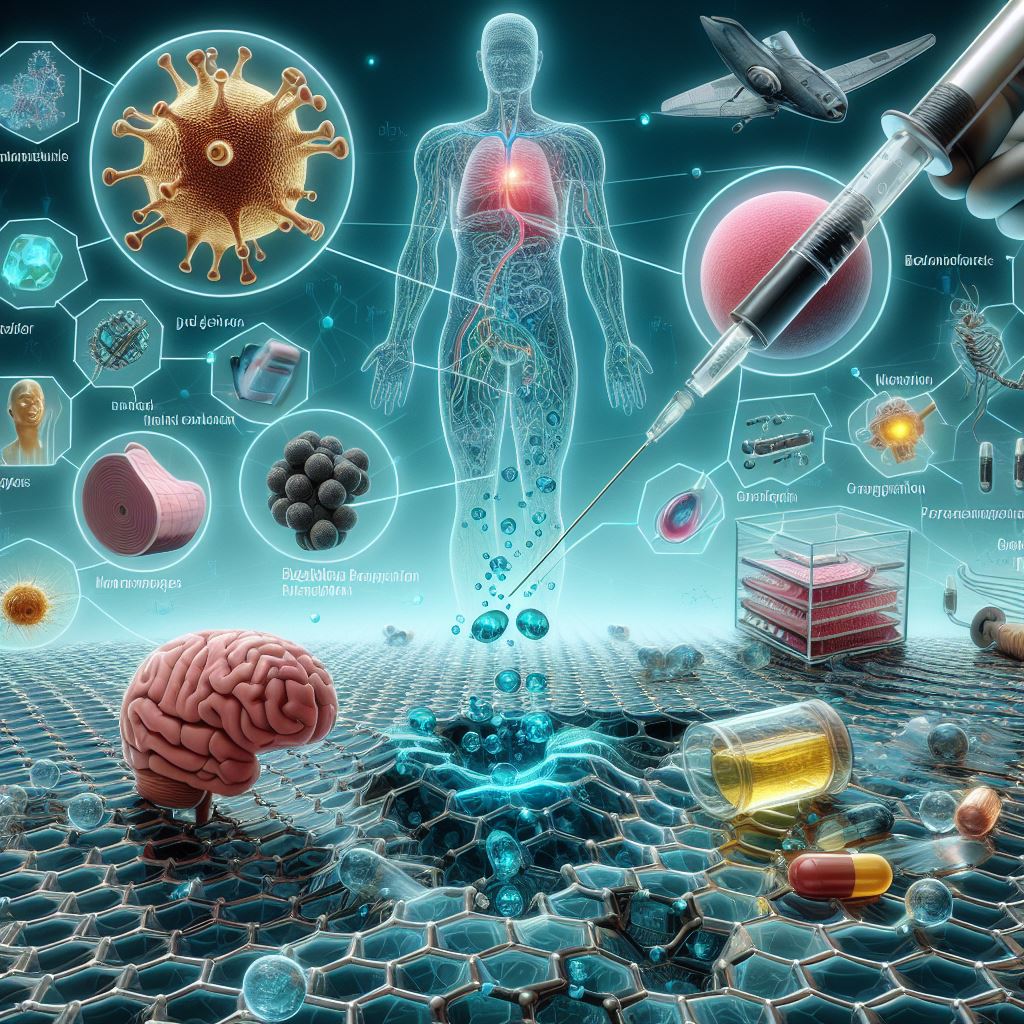
These are just a few examples of graphene’s vast potential. As research progresses, we can expect even more groundbreaking applications to emerge, shaping a future where electronics are faster, materials are stronger, energy is cleaner, and healthcare is more precise. Graphene represents a turning point in material science, offering solutions to some of our most pressing challenges and paving the way for a brighter tomorrow.
The Road Ahead: Challenges and the Future of Graphene
Despite graphene’s remarkable properties, significant hurdles remain before it can reach its full potential. The biggest challenge lies in scaling up production. Currently, most graphene production methods are small-scale and expensive. The “Scotch tape” method, while a scientific breakthrough, isn’t suitable for industrial-scale manufacturing.
Scaling Up for Success: Bridging the Production Gap
Large-scale production methods, like chemical vapor deposition (CVD), hold more promise. However, even CVD faces challenges. For instance, a 2020 study published in Carbon [1] reported the production of high-quality, single-layer graphene on a copper foil using CVD, but the process required specific growth conditions and resulted in a limited area coverage. Achieving cost-effective, large-scale production of high-quality graphene remains a crucial hurdle.
Reference:
A Race for Innovation: Overcoming the Hurdles
Scientists and engineers are actively exploring solutions. Research focuses on developing new production methods like roll-to-roll processing, similar to newspaper printing, to create continuous sheets of graphene. Additionally, researchers are investigating ways to improve existing methods like CVD to optimize efficiency and scalability.
A Glimpse into the Future: A Graphene-Powered World
As production challenges are addressed, graphene’s potential can truly blossom. Here’s a glimpse into the exciting possibilities:
- Electronics Revolution: Imagine smartphones with week-long battery life, thanks to graphene-based supercapacitors. Flexible displays integrated into clothing and transparent touchscreens could become commonplace.
- Energy Solutions: Graphene-based batteries powering electric vehicles with a 500-mile range or efficient, large-scale energy storage solutions for renewable energy grids could become a reality.

- Desalination Breakthroughs: Large-scale desalination plants using graphene membranes could provide clean water access to millions facing water scarcity.
- Biomedical Advancements: Graphene-based biosensors could revolutionize disease detection, while targeted drug delivery systems using graphene could lead to more effective treatments with fewer side effects.
The Road Ahead for Graphene: A Journey of Collaboration
The journey to unlock graphene’s full potential is a collaborative effort. Governments, research institutions, and private companies are investing heavily in graphene research. As these efforts continue, overcoming the production challenges is just a matter of time. We can expect to see significant advancements in the coming years, paving the way for a future where graphene shapes various aspects of our lives.
This is just a glimpse into the exciting possibilities of graphene. With continued research and development, this wonder material has the potential to revolutionize numerous fields and create a more sustainable and advanced future.
Beyond the Hype: The Broader Impact of Graphene
Graphene’s story extends far beyond the headlines and scientific journals. Its discovery has sparked a chain reaction, influencing research efforts, fostering international collaboration, and even inspiring a new generation of scientists.
Inspiring a New Generation: A World of 2D Materials
The discovery of graphene opened a new chapter in materials science, igniting a surge of interest in two-dimensional (2D) materials. Researchers are now exploring a vast library of other 2D materials with unique properties.
For example, a 2021 study published in Nature explored the potential of boron nitride, another 2D material, for next-generation transistors. This research, heavily influenced by the success of graphene, showcases the broader impact of graphene’s discovery in stimulating the exploration of the entire realm of 2D materials.
This newfound fascination with 2D materials has the potential to revolutionize various fields, from electronics to energy storage, just like graphene promises to do. It’s inspiring a new generation of scientists and engineers to push the boundaries of material science and explore the potential of this exciting new class of materials.
References:
- [1] “High-Performance Transistors from Semiconducting Boron Nitride Nanosheets with Record Mobility“.
A Catalyst for Collaboration: A Global Effort
Graphene research is a global endeavor. National research institutions, universities, and private companies worldwide are actively involved in advancing graphene research and development.
A prime example is the European Union Graphene Flagship [2], a collaborative initiative launched in 2013. This flagship program brings together over 150 research groups from across Europe with a combined budget of €1 billion. Their focus is on accelerating graphene research and innovation, fostering collaboration, and paving the way for commercial applications.
This international cooperation is crucial for overcoming the challenges associated with graphene production and accelerating its progress toward real-world applications.
Reference:
- [2] “Graphene Flagship.”
Ethical Considerations: A Responsible Future for Graphene
As with any groundbreaking technology, it’s crucial to consider the ethical implications of graphene’s future applications. One potential concern is the environmental impact of large-scale graphene production. Some production methods require harsh chemicals or high energy consumption, which need to be addressed to ensure a sustainable future for graphene.
Another area of consideration is the use of graphene in nanotechnology. The long-term health and environmental effects of nanoparticles are still under investigation. Responsible research and development practices are essential to ensure the safe and ethical use of graphene in various applications.
By acknowledging these considerations and fostering open discussions, we can navigate the responsible development and deployment of graphene for a brighter future.
Looking Ahead: A Material with Endless Potential
Graphene’s story is just beginning. Its discovery has inspired a new generation of scientists, fueled international collaboration, and opened doors to a world of possibilities beyond itself. As we address the ethical considerations and production challenges, graphene has the potential to revolutionize numerous fields and create a more sustainable and advanced future.
Question: The possibilities with graphene seem endless! What areas of our lives do you think graphene could impact the most? Healthcare, energy generation, or perhaps even space exploration? Share your predictions for the future of graphene and the exciting world of nanotechnology!
Conclusion: A Material Poised to Shape Our Future
Graphene’s journey is a testament to scientific curiosity and the power of unexpected discoveries. From the seemingly ordinary pencil lead emerged a material with extraordinary properties, redefining our understanding of strength, conductivity, and material potential.
The road ahead for graphene research is paved with both challenges and opportunities. Overcoming production hurdles and addressing ethical considerations are crucial steps toward realizing graphene’s full potential. However, the collaborative efforts of scientists, engineers, and researchers worldwide offer a promising outlook.
As production methods improve and research progresses, graphene’s impact will likely be felt across numerous fields. Imagine lighter, stronger materials for construction and aerospace, faster and more efficient electronics, and revolutionary advancements in energy storage and desalination. Even breakthroughs in bioengineering and medicine could be on the horizon.
The future of graphene is brimming with possibilities. This wonder material has the potential to reshape our world, creating a future that is more sustainable, technologically advanced, and perhaps even healthier. As we continue to explore the potential of graphene and other emerging technologies, one thing is certain – the journey toward a brighter future has just begun.
Intrigued by the potential of graphene and curious about other emerging technologies that could shape our future? Check out some of my other blog posts:

